The earliest examples of knitted items date back to the 3rd to 5th century AD (Victoria and Albert Museum). For much of the history of knitting, the techniques had to be handed down through an oral tradition, so it is not surprising that there are many names for the same technique.
In the t-reference section of this website I have been guided by the terminology introduced by June Hemmons Hiatt in The Principles of Knitting, but I also mention other names for techniques as “also known as” within the index and articles. That said, I prefer “public” and “private” side to “outside” and “inside”.
Although I try to use the same terminology in other sections, I record t-breaks and t-torials without reading from a script, with the result that I am less consistent in the use of terminology.
List of terms
Also known as: wrong side, inside, back.
The side of knitted fabric that is not intended to be seen. Some fabrics may be folded (such as a collar on a sweater), in which case the “private side” is the one that is leastvisible. Other fabrics may be designed to have both sides equally visible, such as a reversible scarf, in which case the designer is likely to have defined a term that makes it possible to distinguish between the two sides.
Also known as: right side, outside, front.
The side of knitted fabric that is intended to be seen. Some fabrics may be folded (such as a collar on a sweater), in which case the “public side” is the one that is most visible. Other fabrics may be designed to have both sides equally visible, such as a reversible scarf, in which case the designer is likely to have defined a term that makes it possible to distinguish between the two sides.
Getting it right
The word right can be one of the most confusing words for knitters as it has so many meanings. I try to reduce the confusion on this website by using the following terms – but I do not always get it right correct.
- Public face (right side): this is the face of the fabric that is intended to be seen. Examples: the outside of a sweater, the smooth side of stockinette. Some fabrics are designed for both faces to be visible; in this case you designate one as the public face when following the pattern.
- Private face (wrong side): this is the side of the fabric that is not intended to be seen. Examples: the inside of a sweater, the bumpy side of stockinette.
- Right-hand piece/side (right side): the piece of fabric that is intended to be worn on the wearer’s right.
- Left-hand piece/side (left side): the piece of fabric that is intended to be work on the wearer’s left.
- Fabric/piece/side on your right (right side): the part of the fabric on your right as you view it looking at the public face (or as you knit it, depending on the instructions).
- Fabric/piece/side on your left (left side): the part of the fabric on your left as you view it looking at the public face (or as you knit it, depending on the instructions).
- On/to your right (right): on your right as you look forward.
- On/to your left (left): on your left as you look forward.
- Right-leaning increase/decrease: an increase or decrease that creates a stitch that leans to the right of the knitter when working on the public face.
- Left-leaning increase/decrease: an increase or decrease that creates a stitch that leans to the left of the knitter when working on the public face.
- Correct (right): as defined in the dictionary. (OK, that is a cop-out – my dictionary defines it as “right”)
- Incorrect (wrong): as defined in the dictionary. (OK, that is a cop-out – my dictionary defines it as “wrong”)
When one of these phrases has been used once to provide clarity, it may be abbreviated to “right” or “left” later in the paragraph – unless the meaning changes – to make the text more readable.
Note for knitting backwards (mirror knitting)
Most patterns are written to be knit using a technique that transfers stitches from the left-hand needle to the right-hand needle as they are worked. Knitting backwards (mirror knitting) transfers stitches in the opposite direction. Although often associated with knitters whose left hand is dominant, some knitters use knitting backwards to avoid turning the fabric to work from the private side.
Following a pattern when you are knitting backwards means that you have to make adjustments to instructions that use “left” or “right”. See the article on knitting backwards.


